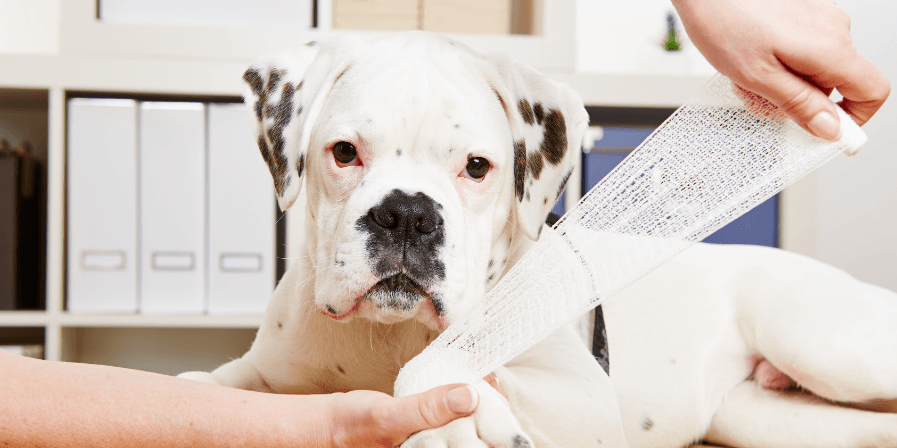Pet Burn Injuries: Essential First Aid & Treatment Guide

Burn injuries in pets can be painful and even life-threatening if not treated properly. Whether caused by heat, chemicals, electricity, or friction, burns require immediate attention to minimize damage and discomfort. As a responsible pet owner, understanding how to handle burn injuries is crucial. This guide covers the types of burns, first aid measures, and when to seek professional veterinary care to ensure your pet’s safety.
Understanding Burn Severity in Pets
Burns vary in severity, from mild superficial burns to deep tissue injuries. The extent of the damage determines the treatment approach.
First-degree burns affect only the outer layer of the skin, leading to redness, mild swelling, and slight pain. These usually heal on their own within a few days if kept clean and protected. Second-degree burns are more severe, damaging both the outer and underlying layers of skin. They often cause blisters, increased pain, and inflammation, requiring medical attention to prevent infection. Third-degree burns, the most severe, destroy all layers of the skin and may extend into muscles and nerves. These burns can leave the skin charred or leathery and require immediate veterinary intervention.
First Aid for Burn Injuries
If your pet sustains a burn, quick action can help prevent further damage and ease their pain. The first step is to remove them from the source of the burn. If the injury was caused by fire, extinguish any flames. In cases of electrical burns, always turn off the power before touching your pet to prevent further injury.
Cooling the burn is essential. Run cool water (not cold or icy) over the affected area for about ten to twenty minutes to reduce heat and alleviate pain. Avoid using ice, as it can further damage the tissues. After cooling the burn, gently pat the area dry with a clean cloth and cover it with a loose, sterile, non-stick bandage to prevent contamination. Avoid applying butter, creams, or ointments, as these can trap heat and worsen the injury.
It is important to prevent your pet from licking or scratching the burn, as this can introduce bacteria and lead to infection. An Elizabethan collar (E-collar) can be helpful in keeping them from irritating the wound. Even if a burn appears minor, consulting a veterinarian is always recommended. Some burns may cause deeper tissue damage that isn’t immediately visible, and professional treatment may be necessary for pain relief, infection control, and faster healing.
Special Considerations for Different Types of Burns
Burn injuries can result from various sources, and each requires specific care. Chemical burns occur when pets come into contact with harsh substances like cleaning agents or acids. If this happens, flush the affected area with plenty of water for at least fifteen minutes to remove the chemical. Do not scrub, as it can worsen the damage. Take note of the chemical involved and inform your veterinarian for appropriate treatment.
Electrical burns are common in pets that chew on power cords. If your pet has suffered an electrical burn, check for burns around the mouth or paws, but also be aware of possible internal injuries. Even if there are no visible signs of burns, veterinary attention is necessary to assess any damage to the heart or lungs.
Friction burns, such as road rash, occur when a pet’s skin scrapes against a rough surface. These should be cleaned with sterile saline or a mild antiseptic solution and kept covered to prevent infection. Large or deep wounds require a veterinarian’s assessment to ensure proper healing.
Preventing Burn Injuries in Pets
Taking preventive measures can significantly reduce the risk of burns in pets. Pet-proofing your home is essential—keep pets away from open flames, stovetops, fireplaces, and heated appliances. Store household chemicals and cleaning agents securely to prevent accidental exposure. Electrical cords should be kept out of reach or covered to discourage chewing. When outdoors, be mindful of environmental risks. Hot pavement can burn a pet’s paw pads, so avoid walks on extremely hot days or use protective paw balms. Keep pets away from bonfires, fireworks, and grills to prevent accidental burns. Inside the house, supervise pets around heat sources and avoid using electric blankets or heating pads that are not pet-safe.
Final Thoughts
Burn injuries in pets require prompt attention, and knowing how to respond can make a significant difference in their recovery. Administering first aid, preventing further harm, and seeking veterinary care are crucial in ensuring the best outcome for your pet. While accidents can happen, taking preventive measures can help keep your furry friend safe from burns and other household hazards. By staying informed and prepared, you can protect your pet from painful injuries and provide them with the care they need when emergencies arise.
At DCC Animal Hospital, we provide expert care for pet burn injuries with advanced treatment, pain management, and emergency support. Our state-of-the-art facilities in Gurgaon and Delhi ensure compassionate, high-quality veterinary care. Your pet’s health and well-being are our top priorities.
FAQs
1. How do you treat a pet burn?
Immediately cool the burn with cool (not cold) water for 10–20 minutes. Avoid applying ice, creams, or ointments. Cover the area with a sterile, non-stick bandage and prevent your pet from licking it. Seek veterinary care as soon as possible.
2. When should I take my pet to the vet for a burn?
You should take your pet to the vet immediately if the burn is severe, covers a large area, causes blisters, or if your pet is in pain. Even minor burns should be evaluated to prevent infection and ensure proper healing.


 How can we help?
How can we help?